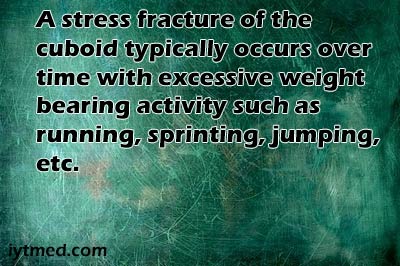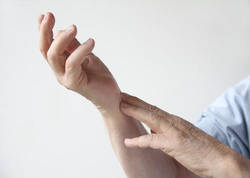Head injuries can range from minor bumps to severe traumatic brain injuries (TBI), affecting millions of Americans each year. Understanding the causes, diagnosis, and the latest treatment methods is crucial for prevention and effective management.
Leading Causes of Head Trauma (USA, 2024)
| Cause | Percentage (%) |
|---|---|
| Falls | 48% |
| Motor Vehicle Accidents | 25% |
| Struck by Object | 17% |
| Assault | 7% |
| Other | 3% |
This chart highlights the leading causes of head trauma in the USA for 2024. Falls remain the most common cause, followed by motor vehicle accidents and injuries from being struck by objects. Understanding these risks can help in prevention and safety measures.
Common Causes of Head Injury
Head injuries result from various incidents, including:
- Falls: The most common cause of head injuries, especially among young children and elderly individuals. A simple trip over a rug can lead to a traumatic brain injury. In severe cases, falls can cause skull fractures or brain bleeding. A notable case involved a 78-year-old woman in California who slipped in her bathroom, suffering a subdural hematoma that required emergency surgery.
- Motor vehicle accidents: High-impact crashes can result in concussions, skull fractures, or severe TBIs. Victims may experience whiplash, leading to brain movement inside the skull, causing bruising and bleeding. A 25-year-old man in Florida was involved in a side-impact collision, sustaining a diffuse axonal injury, which led to months of rehabilitation.
- Sports-related impacts: Contact sports like football, boxing, and hockey significantly increase the risk of concussions. Repeated head trauma can lead to chronic traumatic encephalopathy (CTE), a degenerative brain condition. A 17-year-old high school football player in Texas suffered multiple concussions over a season, later experiencing memory loss and mood swings.
- Workplace accidents: Industries like construction and manufacturing pose serious risks. Falling objects, slips, and machinery-related injuries can lead to serious head trauma. In one case, a 40-year-old factory worker in New York suffered a severe concussion when a heavy beam fell on his head, resulting in long-term cognitive impairments.
- Physical assaults: Intentional head injuries, such as those from fights or domestic violence, can cause severe trauma, including skull fractures and brain hemorrhages. A 30-year-old woman in Illinois was struck in the head during an assault, leading to a brain contusion that required months of recovery.
According to the CDC, falls account for nearly 50% of all TBI-related emergency visits, highlighting the need for preventive measures, especially among vulnerable populations.
Recognizing Symptoms of Head Injury
Symptoms can range from mild to severe and may include:
- Headache and dizziness: This isn’t just a mild ache—it can feel like a tight band squeezing your skull or a pounding sensation, similar to a bad hangover but without alcohol. Dizziness may resemble the sensation of standing up too quickly, but it lasts longer and can make balance difficult.
- Nausea or vomiting: Unlike a simple upset stomach, this nausea can hit suddenly and feel relentless, as if you’ve been spinning in circles for too long. Vomiting is a red flag, especially if it occurs multiple times.
- Confusion or memory loss: Imagine walking into a room and forgetting why you’re there—but amplified. You might struggle to recall recent events, feel disoriented in familiar places, or mix up names and details.
- Loss of consciousness (brief or prolonged): This isn’t just “blacking out” like standing up too fast—it’s a complete shutdown of awareness. Even if you wake up quickly, any period of unconsciousness is serious.
- Blurred vision or ringing in the ears: Vision might feel like you’re looking through a foggy window, or objects might have a slight double effect. Ringing in the ears (tinnitus) is often compared to the aftermath of a loud concert but may persist for hours or days.
- Behavioral changes, such as irritability or difficulty concentrating: This can feel like an exaggerated version of being sleep-deprived. Simple tasks become frustrating, emotions feel out of control, and focusing on anything—even a short conversation—can be exhausting.
If a head injury is suspected, immediate medical evaluation is essential to rule out life-threatening conditions such as brain hemorrhage or swelling.
Diagnostic Methods for Head Injury
Accurate diagnosis ensures appropriate treatment. But how does the process actually feel, and what should a patient expect?
CT Scan (Computed Tomography)
A CT scan is one of the fastest ways to assess a head injury. The patient lies on a motorized table that smoothly slides into a doughnut-shaped scanner. The machine quietly takes multiple X-ray images in seconds, assembling a 3D image of the brain. It’s a non-invasive process, but patients with claustrophobia may feel slightly uneasy. No special preparation is required, though removing metal objects like jewelry is necessary.
- Purpose: Detects bleeding, fractures, or swelling.
- Accuracy: 9/10
- Cost: $800–$3,000
- Complexity: Low; results available within minutes.
MRI (Magnetic Resonance Imaging)
Unlike a CT scan, an MRI takes longer—typically 30–60 minutes. The patient lies inside a long, enclosed tube while powerful magnets generate detailed images of brain structures. The experience can be noisy, requiring earplugs or noise-canceling headphones. Some patients may need contrast dye injected through an IV, which helps highlight injuries. Fasting for a few hours beforehand might be necessary in certain cases.
- Purpose: Identifies subtle brain damage not visible on a CT scan.
- Accuracy: 9.5/10
- Cost: $1,200–$4,000
- Complexity: Moderate; requires staying still for an extended period.
Glasgow Coma Scale (GCS)
This quick assessment helps doctors gauge the severity of a brain injury. It involves simple tasks like following commands, eye movement tracking, and verbal responses. There’s no preparation needed, and it’s often performed at the scene of the injury or upon arrival at the hospital.
- Purpose: Assesses consciousness level and neurological function.
- Accuracy: 7.5/10
- Cost: Free to minimal
- Complexity: Very low; immediate results.
X-ray (for Skull Fractures)
For patients suspected of having a skull fracture, a quick X-ray may be done. It’s similar to having an X-ray of a limb—painless and fast. The patient will be asked to hold still while the image is taken. However, X-rays do not reveal soft tissue injuries like brain swelling or bleeding.
- Purpose: Detects skull fractures but not soft tissue damage.
- Accuracy: 6.5/10
- Cost: $100–$1,000
- Complexity: Low; quick and non-invasive.
Understanding these diagnostic procedures helps reduce anxiety for patients and ensures they are prepared for what to expect during the evaluation process.
Types of Head Injuries Diagnosed in ER (USA, 2024)
This chart presents the distribution of head injury types diagnosed in emergency rooms across the USA in 2024. Concussions make up the majority, followed by skull fractures and intracranial hemorrhages. Awareness of these statistics helps in understanding the prevalence and severity of different head injuries.
Modern Treatments and Innovations
Recent advancements in medical technology have significantly improved head injury treatment.
Minimally Invasive Brain Surgery
This surgical method reduces trauma to surrounding brain tissue and shortens recovery time. It involves using endoscopic tools, robotic assistance, and 3D imaging to precisely remove blood clots or repair damaged vessels. Patients usually undergo general anesthesia, and the procedure lasts between 2–6 hours depending on severity.
- Effectiveness: High, particularly for localized brain hemorrhages or fractures.
- Cost: $20,000–$100,000
- Popularity: Growing due to reduced complications and shorter hospital stays.
- Recovery: Most patients are monitored for a few days and may need rehabilitation therapy.
Neuroprotective Medications
Drugs like progesterone, citicoline, and calcium channel blockers are showing promise in protecting brain cells from further damage after a TBI. These medications work by reducing inflammation, preventing cell death, and enhancing brain repair processes.
- Effectiveness: Moderate; still under research, but early trials are promising.
- Cost: $50–$500 per treatment course.
- Popularity: Increasing, especially in emergency medicine.
- Administration: Usually given intravenously within hours of injury for best results.
Rehabilitation Programs
Rehabilitation is essential for patients recovering from a head injury, especially those with long-term cognitive or motor impairments. AI-powered cognitive therapy, virtual reality (VR) training, and neurofeedback are revolutionizing the rehabilitation process. Sessions can include speech therapy, physical therapy, and psychological counseling.
- Effectiveness: Very high, particularly in cases of mild-to-moderate TBI.
- Cost: $100–$500 per session; long-term therapy may cost thousands.
- Popularity: Common, especially for athletes and accident survivors.
- Duration: Varies from weeks to years depending on injury severity.
Helmet and Impact Sensors
These devices are designed for injury prevention rather than treatment. Modern helmets for sports and industrial use incorporate smart impact sensors that detect and report the severity of a hit, helping medical personnel assess potential head trauma in real time.
- Effectiveness: Prevents severe head injuries but does not treat existing ones.
- Cost: $50–$1,000 depending on technology.
- Popularity: Widely adopted in professional sports and hazardous workplaces.
- Usage: Recommended for athletes, motorcyclists, and construction workers.
Case Study: Real-World Example
A 32-year-old male from Texas sustained a severe concussion in a motorcycle accident. Initially disoriented, he underwent an MRI, revealing a minor brain contusion. He was placed under observation for 48 hours and prescribed neurotherapy sessions. After three months of rehabilitation, he fully regained cognitive function.
Editorial Advice
Reyus Mammadli, healthcare advisor, emphasizes the importance of early intervention: “Never ignore a head injury, no matter how minor it seems. Rapid assessment and modern treatments greatly improve recovery outcomes.” He also recommends wearing protective gear, especially in high-risk activities, and staying informed about the latest safety measures.
By recognizing symptoms early and seeking immediate care, individuals can prevent complications and improve long-term outcomes.
Sports with Highest Head Injury Rates (USA, 2024, Per 100,000 Participants)
| Sport | Injury Rate |
|---|---|
| Football | 62 |
| Ice Hockey | 47 |
| Soccer | 35 |
| Basketball | 30 |
| Cycling | 25 |
| Rugby | 20 |
This chart displays the head injury rates for different sports in the USA in 2024. Football has the highest incidence, followed by ice hockey and soccer. These statistics highlight the risks associated with contact sports and emphasize the importance of safety measures.
References
- Centers for Disease Control and Prevention (CDC) – Traumatic Brain Injury & Concussion
- Mayo Clinic – Head Injury: Symptoms & Treatment
- Johns Hopkins Medicine – TBI Overview
- National Institute of Neurological Disorders and Stroke (NINDS) – TBI Information
- American Association of Neurological Surgeons (AANS) – Concussion & Brain Injury
- Harvard Medical School – Understanding Concussions









